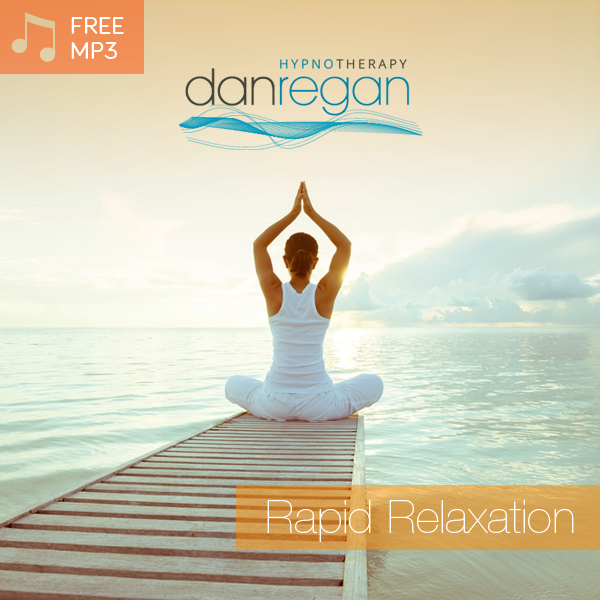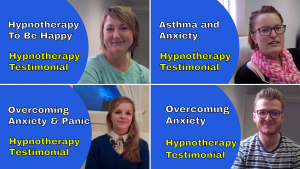Required
Walk And Talk Therapy – Where Nature, Exercise and Mental Health Combine
Walk And Talk Therapy – Where Nature, Exercise and Mental Health Combine
As I write this, Spring is upon us and out of my window the sky is blue and the sun is shining brightly (although the frost on the car was so thick this morning that it took ages to defrost and made me late for bootcamp!).
With a few extra layers on (for those out-of-the sun moments), it’s a lovely time of year to get out and go for a walk. I love running at this time of year when the sun is out and it isn’t yet the crazy heat of summer. And now the mornings are lighter, the sun also shines on us at bootcamp (even if it was totally freezing cold this morning).
It was so nice that yesterday we all went for a walk around Ely and had a bit of fun playing tag in the grounds of Ely Cathedral, although the photos made me realise just how long my lockdown hair had become (but by the time you read this normal hair order will have been restored!).
I’ve written a lot in previous articles about the benefits of exercise, and of getting out in nature, for your mental health and well-being. It makes a massive difference to be active and get out, especially after all the restrictions from lockdown that curtailed a lot of these activities. And recently the idea of walk and talk therapy seems to have grown, especially as it has allowed people to access therapeutic help that keeps social distancing and avoids too much close contact. Naturally not all mental health therapy approaches are well suited to walk and talk therapy, which is perhaps why it has mainly up until now been something mostly popular with counsellors. But the key question, with any type of therapeutic intervention, is all about whether it can actually help you to feel better.
So what does the evidence tell us?
And here I am getting outside and being active in nature with my eldest (who still thinks it’s a good idea for her poor old dad to give here a lift!):
And totally freezing at bootcamp (don’t be fooled by the sun, it was soooo cold! Definitely kept my hat and jumper on for that one!)
Nature and Exercise For Your Mental Health
Walk and talk therapy involves getting out of the office and delivering/receiving therapy outdoors, while on the move. As an idea it seems to make sense because some people could find the office environment too stifling and restricted for opening up and talking about their problems. Getting out and about can allow for a less formal, more relaxing kind of experience. Certainly I’ve had many great conversations about things when we’ve walked along, taking in the sights and sounds as we do so, and when positioned more side by side rather than being sat across from each other.
I’m a big fan of getting active and moving when I want to disentangle my own thoughts, or to process something inside my own head. The mix of movement and space seems to really help me to do this (which is perhaps why long distance running suits me so well!).
There’s a mass of evidence supporting getting out in nature for your mental health and well-being. You can learn more about the evidence in these articles:
Using Nature To Positively Impact Your Mental Health
Reduce Anxiety and Stress With Nature During The Pandemic
Using Nature To Reduce Stress and Boost Mental Health
And there is also a wealth of evidence that tells us how beneficial exercise is for your mental health and for anxiety and depression. There’s lots more on that in these earlier posts:
Ely Festive 5k 2019 and Why You Should Get Running For Your Mental Health
Depression: Does aerobic exercise have anti-depressant effects?
Anxiety Disorders – Why you should get moving to treat anxiety
Exercise & Mental Health – Depression, Stress & Memory
All of this evidence though tends to look at the results of an individual getting out in nature or exercising. We also know that hypnotherapy can be beneficial for many mental health conditions such as anxiety, depression, stress and many other issues. So is there any evidence for putting these things together such as is promoted in walk and talk therapy?
Walk and Talk Therapy Research
Walk and talk therapy tends to combine counselling, walking and the outdoors. It is designed to bring the benefits of nature, physical activity and therapy together under one combined framework.
Back in 2011, McKinney interviewed eleven therapists in the USA about their experiences with walk and talk therapy. Perhaps unsurprisingly (as they offer it as a service and are likely to be enthusiastic about it), the therapists believed that walk and talk therapy was beneficial for clients. The therapists felt that clients were more relaxed and opened up more quickly about things. They also pointed to the physical health benefits, mental health benefits and benefits from being out in nature. But of course, there are also limitations upon walk and talk therapy, such as the weather, confidentiality, an increased level of potential distractions, and the need to be physically active and mobile enough to walk for the session.
In another study, Revell and McLeod (2016) had eighteen walk and talk therapy practitioners in the UK complete an online questionnaire. Again, the therapists perceived that walking and talking could help shift ‘stuckness’ in clients and facilitate psychological processing. In addition, they considered that walking side by side could promote a collaborative way of working, helping clients to open up. And again, potential limitations were highlighted, including the uncertainty of the weather, the possibility of the client seeing people they know and the potential to be overheard during the session.
Whereas the above studies canvassed the views and perspectives of therapists, Revell (2017) looked at a sample of students and asked them to consider factors associated with the likelihood of choosing to participate in walk and talk therapy. Findings from this study showed that potential clients could identify a number of benefits that could be gained from participating in walk and talk therapy.
This was the first known study to explore potential client’s attitudes towards walk and talk therapy, although the perceptions gathered were not from actual clients of therapy and it’s possible that perceptions might be different for individuals at the point of accessing therapy, when experiencing a level of distress or seeking particular outcomes from their therapy.
In essence, the outdoor setting for therapy was viewed as both helpful and problematic. Being in an open space may offer the opportunity for enhanced positive effect through an improvement in mood and a feel good factor, but there was a risk of privacy being compromised, the risk of being overheard by others and a sense of being exposed or emotionally unsafe as a result.
Walking can support overall well-being, reduce stress and provide a fertile environment for thinking/problem solving strategies. It also has the potential to make talking easier, yet there are also potential limiting factors here such as the weather, distractions and any physical limitations that could be counterproductive to the therapy. And some participants highlighted concerns about safety from walking with someone they didn’t know and a sense that walk and talk therapy sessions would feel less professional, leading to a reluctance to open up about some issues.
And further research (Clark, 2019), based upon the views of three former walk and talk therapy clients, echoed many of the same benefits and concerns mentioned above. These three clients considered their walk and talk therapy to be equally, or more therapeutic than their previous, indoor therapy but the small sample means these results can’t be generalised to a wider population. Outdoor sessions were considered to be easier, more comfortable, and more natural but brought with them concerns about the weather, temperature, confidentiality and stigma.
The most recent addition to the research about walk and talk therapy comes from Cooley, Jones, Kurtz and Robertson (2020) who explored the experiences of practitioners and clients who have practiced talking therapy in natural, outdoor spaces. Although suitability for walk and talk therapy could not be specified to any particular client group or presenting problems, clients demonstrated an attraction to natural spaces, which came from feeling at ease in nature, excited by it, or connected to nature. Some of the clients were uncomfortable with more conventional therapy, due to the perceived formality of it, feelings of anxiety, pressure and tension towards the face to face interaction, or from feeling trapped within an indoor space.
In summary of all of this research, I think it’s fair to say that there are both potential benefits and potential limitations of walk and talk therapy. Certainly the evidence on the benefits for clients appears more limited and needs further research.
Is Walk And Talk Therapy For You?
We know that time spent in nature, and time being physically active, have physiological and psychological benefits and these two things should make up part of your personal approach to supporting your physical and mental health.
Whether walk and talk therapy is right for you is something that needs to be considered on an individual, personal level. I can certainly appreciate the value of getting outside during certain aspects of therapy, particularly if the office environment is too formal or enclosed for you. On the flip side, learning to face the indoor environment, to relax in it and to open up has huge potential advantages both for your therapy and the longer term when you may encounter similar situations. Learning to be able to talk about your thoughts, feelings, behaviours and emotions, even if initially problematic, can become part of the solution to how you feel and something that benefits you long into the future.
Of course, the nature of the issue, the weather (this is the UK after all!), the potential for getting distracted and the risk of seeing people you know or being overheard, are all potential concerns that arise whenever you move out of the confines of an enclosed, private and confidential space.
Whilst walk and talk therapy tends to be something primarily offered by counsellors, there are many aspects of hypnotherapy that can still be called upon effectively. Stress management skills, mental imagery, taking control over your thoughts and self-talk, visualisation techniques and many other strategies and techniques can still be utilised. Multiple walk and talk therapy sessions may be better suited to counselling where there is more talking about thoughts and feelings, often over a longer period than with hypnotherapy, where after the initial assessment and discussion of the problem and goals, therapy moves speedily to solutions and improvements.
In my experience over the last decade (and presumably in the experience of my clients who have left their feedback on this website), sitting in a room for therapy to deal with issues such as anxiety, fears and low self-esteem, works just fine. There is certainly scope on an individual basis to talk about some outdoor work, even if the rest of the therapy is indoors, so the best thing would be to get in touch if you think that this is something you would benefit from. In the meantime, do be sure to be physically active and to spend plenty of time in and around nature for your mental health and well-being.
To your health and happiness,
Dan Regan
Online Skype and Zoom Hypnotherapy
Face-to-face hypnotherapy in Ely & Newmarket
Struggling with anxiety, stress, worry and fear and need some help? Find out how I can help with a Complimentary Hypnotherapy Strategy Session. Learn more here: Appointments
Find out what dozens of other people have said after their hypnotherapy sessions with Dan: Hypnotherapy Testimonials
And check out these powerful hypnosis downloads that can start helping you right away with anxiety, confidence and more: Hypnosis Downloads
References:
Clark, D.C., 2019. Adult Clients’ Experience of Walk-and-Talk Therapy.
Cooley, S.J., Jones, C.R., Kurtz, A. and Robertson, N., 2020. ‘Into the Wild’: A meta-synthesis of talking therapy in natural outdoor spaces. Clinical psychology review, 77, p.101841.
McKinney, B.L., 2011. Therapist’s perceptions of walk and talk therapy: A grounded study.
Revell, S., 2017. Walk and talk therapy: Potential client perceptions. Contemporary Research Topics, p.24.
Revell, S. and McLeod, J., 2016. Experiences of therapists who integrate walk and talk into their professional practice. Counselling and Psychotherapy Research, 16(1), pp.35-43.
Get Your Copy Right Now…
Subscribe to Dan’s Digest filled with tips, strategies and techniques and get instant access to your free rapid relaxation hypnosis audio track.
Enjoy feeling and being more mentally calm and physically relaxed right now:






0 Comments